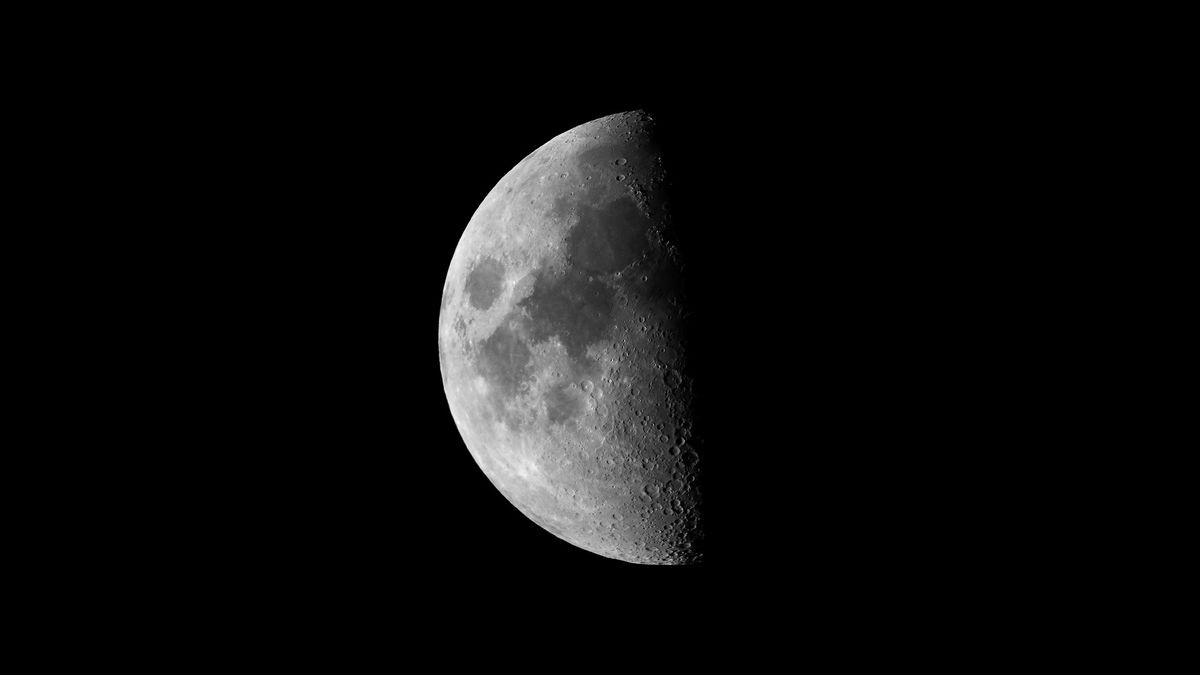
Ever wondered what makes the first quarter moon so special? Well, you're about to find out! This phase of the moon, often seen as a perfect half-circle in the sky, marks a unique point in our lunar cycle. But what's behind this celestial phenomenon? The first quarter moon occurs when the moon is exactly one-quarter of the way through its orbit around Earth, leading to half of it being illuminated by the sun and visible from our perspective. This phase is not just a treat for the eyes; it's packed with intriguing facts that many of us might not know. From its impact on tides to cultural significance across different societies, the first quarter moon holds more mysteries than you might think. Ready to illuminate your mind with some luminous facts? Let's get started on this celestial journey!
Key Takeaways:
- The First Quarter Moon is a significant phase in the lunar cycle, offering a unique half-illuminated appearance and cultural significance, making it an ideal time for observation and study.
- The First Quarter Moon has historical, scientific, and cultural importance, impacting everything from agriculture to space exploration, and serving as a source of inspiration and wonder for people around the world.
What Is the First Quarter Moon?
When observing the lunar cycle, the first quarter moon marks a significant phase. This phase occurs approximately one week after the new moon, showcasing half of the moon's surface illuminated by the sun. Unlike its name might suggest, the first quarter does not refer to a quarter of the moon's cycle but rather to the point where the moon has completed a quarter of its orbit around Earth since the new moon.
How Does the First Quarter Moon Appear in the Sky?
During this phase, the right half of the moon (in the northern hemisphere) appears lit up, while the left half remains in darkness. This creates a striking half-moon shape in the sky. Observers in the southern hemisphere will see this orientation flipped, with the left side illuminated.
Unique Characteristics of the First Quarter Moon
-
Visibility: The first quarter moon rises at noon and sets at midnight, making it visible from the afternoon into the early night. This timing offers ample opportunity for observers to view the moon during more sociable hours.
-
Position: It is positioned at a 90-degree angle relative to the Earth and sun. This positioning results in half of the moon's face, that faces Earth, being sunlit and visible.
-
Craters and Terrain: This phase provides an excellent view of the moon's craters and terrain due to the shadows cast by the sun's angle. The contrast between light and dark areas makes surface features more pronounced.
Cultural and Historical Significance
-
Agricultural Planning: Historically, farmers used the first quarter moon as a guide for planting crops. The belief was that the increasing light from the moon encouraged growth.
-
Mythology and Lore: Many cultures have myths associated with the moon's phases, including the first quarter. These stories often attribute magical properties to the moon or interpret its phases as omens.
-
Timekeeping: Before the widespread use of clocks, the lunar phases, including the first quarter, helped people track time and determine the best times for planting, harvesting, and celebrating festivals.
Scientific Insights Gained from the First Quarter Moon
-
Lunar Surface Study: The first quarter moon's illumination is ideal for studying lunar maria and highlands. These observations have contributed to our understanding of the moon's geological history.
-
Tidal Forces: This phase helps scientists study Earth's tidal patterns. The gravitational pull between the Earth and moon during the first quarter (and last quarter) moon exerts less force than during the new or full moon, leading to neap tides, which are lower in amplitude.
-
Space Missions: The visibility and position of the first quarter moon have made it a target for several space missions. It provides a window for launching missions to the moon or beyond, taking advantage of the moon's gravitational pull.
Observing the First Quarter Moon
-
Best Time for Observation: For those interested in astronomy, the first quarter moon offers a prime time for observation. Its early night visibility makes it accessible for people of all ages.
-
Telescopic Views: With a telescope, viewers can see an array of lunar features in great detail during the first quarter phase. This includes craters, mountain ranges, and the lunar seas.
-
Photography: The first quarter moon is also an ideal subject for astrophotography. Its position in the sky and the contrast on its surface allow for stunning photographs.
Impact on Human Behavior and Beliefs
-
Sleep Patterns: Some studies suggest that the moon's phases, including the first quarter, can influence human sleep patterns. People might find it harder to fall asleep and have disrupted sleep during this phase.
-
Cultural Festivals: In various cultures, the first quarter moon marks the beginning of festivals and religious observances. Its appearance in the sky is a signal for certain activities or rituals to commence.
-
Superstitions: There are numerous superstitions related to the first quarter moon. For instance, some believe starting a new project or venture during this phase will bring good fortune, as the moon's light is growing.
The First Quarter Moon in Modern Times
-
Educational Resource: Today, the first quarter moon serves as an educational resource, helping teach students about the moon's phases, astronomy, and the solar system.
-
Inspiration for Artists: Artists and writers often draw inspiration from the moon's beauty and mystery. The first quarter moon, with its distinct half-illuminated appearance, has been a muse for countless works of art and literature.
-
Space Exploration: The ongoing exploration of the moon, including plans for manned missions, often focuses on understanding the lunar phases and their effects on potential colonization. The first quarter moon phase provides insights into the best times for landing on and launching from the moon due to its stable lighting conditions.
-
Environmental Awareness: Observing the first quarter moon can foster a greater appreciation for the natural world and our place within the cosmos. It reminds us of the interconnectedness of Earth's systems and the universe.
-
Social Events: Moon-gazing parties and astronomical gatherings often coincide with the first quarter moon. These events bring communities together to share in the wonder of the night sky.
-
Mental Health: For some, looking at the moon during this phase can have a calming effect, offering a moment of peace and reflection in our fast-paced world.
-
Technological Advancements: The study of the moon, including its first quarter phase, drives technological advancements in space exploration, optics, and even materials science, as researchers seek to better understand and explore our celestial neighbor.
A Final Glimpse at the Lunar Marvel
We've journeyed through the night sky, uncovering the mysteries and marvels of the first quarter moon. This phase, a herald of the waxing cycle, offers more than just a celestial spectacle; it's a beacon for astronomers and a guide for ancient navigators. Understanding its unique position, we've seen how it influences Earth's tides and illuminates our understanding of the lunar calendar. Its significance spans cultures and centuries, reminding us of our shared gaze towards the heavens. As we close this chapter, remember that every glance at the night sky is an opportunity to connect with the vast universe and its timeless wonders. Keep looking up, for the moon's phases are not just markers of time but invitations to explore, reflect, and marvel at the cosmos.
Frequently Asked Questions
Was this page helpful?
Our commitment to delivering trustworthy and engaging content is at the heart of what we do. Each fact on our site is contributed by real users like you, bringing a wealth of diverse insights and information. To ensure the highest standards of accuracy and reliability, our dedicated editors meticulously review each submission. This process guarantees that the facts we share are not only fascinating but also credible. Trust in our commitment to quality and authenticity as you explore and learn with us.


